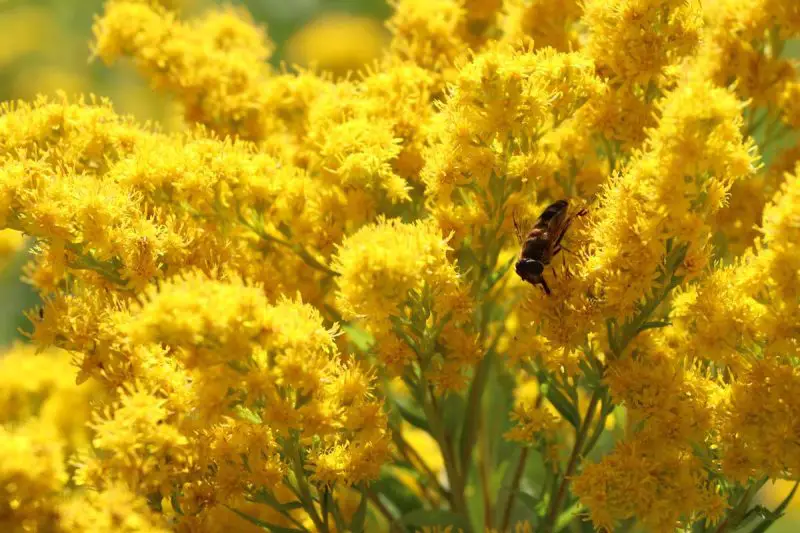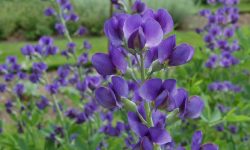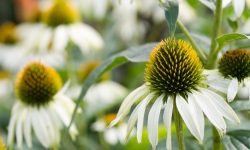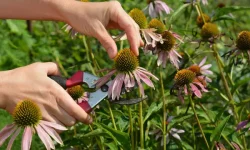Goldenrod is a striking plant with radiant yellow flowers, often seen as a natural signal of seasonal change. Its bright clusters not only light up landscapes but also attract bees, butterflies, and many other pollinators. For this reason, gardeners and flower enthusiasts are often curious about the exact time goldenrod begins to bloom.
Knowing when goldenrod blooms allows you to enjoy its beauty at the right moment while also improving care and planting practices. Understanding its flowering season also helps you design a lively garden that stays attractive throughout the year. This guide will provide clear, detailed, and practical insights into the blooming cycle of goldenrod, giving you everything you need to appreciate and grow this vibrant plant successfully.
Understanding Goldenrod

Botanical Overview
Goldenrod belongs to the genus Solidago, which encompasses more than one hundred recognized species. These plants are part of the Asteraceae family, making them relatives of daisies and asters. Most species display tall, slender stems that can reach between two and five feet in height. At the top of each stem, dense clusters of small, daisy-like yellow flowers appear, forming vibrant plumes that create the plant’s signature golden display. Their deep green foliage contrasts beautifully with the blossoms, enhancing their visual appeal in both wild and cultivated landscapes.
The structure of goldenrod makes it highly adaptable and resilient. Its strong rhizome system allows it to spread quickly, which is why it often thrives in open fields and along roadsides. While some gardeners appreciate this vigorous growth, others may find it invasive if left unmanaged. Despite this, its ecological value cannot be overstated. Goldenrod provides nectar and pollen for bees, butterflies, and other insects late in the season, when many other plants have stopped blooming. This extended flowering period makes goldenrod a cornerstone species for supporting pollinator populations.
Different Varieties
Goldenrod includes a wide range of species, each offering unique traits suited for different landscapes. One of the most common is Solidago canadensis, or Canada goldenrod, known for its tall growth and abundant yellow plumes. Another popular species is Solidago rigida, which produces sturdier stems and flat clusters of flowers. Gardeners often prefer Solidago rugosa for its compact growth, making it an excellent choice for smaller gardens. Each variety blooms at slightly different times, creating opportunities for staggered color throughout late summer and fall.
Hybrid and ornamental varieties have also been developed to enhance garden appeal while controlling spread. For instance, cultivars like ‘Fireworks’ and ‘Golden Baby’ are bred for their manageable size and striking displays. These garden-friendly selections are non-invasive and easier to maintain, making them suitable for borders and mixed flowerbeds. By choosing the right variety, gardeners can match goldenrod’s beauty with their specific needs, whether for pollinator support, vibrant seasonal color, or naturalizing open areas. Understanding these options helps ensure success when incorporating goldenrod into your outdoor spaces.
When Does Goldenrod Bloom?
Goldenrod is most recognized for its late-season display, filling meadows and gardens with golden hues when many other flowers have faded. In general, goldenrod blooms from late summer into early fall, with peak flowering usually occurring between August and October. The exact timing depends on the species, location, and weather conditions, but its blossoms reliably mark the seasonal transition toward autumn. For gardeners, this predictable pattern makes goldenrod an important plant for extending the color and vitality of the landscape.
The bloom period is influenced by the plant’s growth cycle. Goldenrod spends spring and early summer developing strong roots and lush foliage. By mid to late summer, it channels its energy into producing clusters of bright yellow flowers. These blooms can last for several weeks, creating a continuous show of color that enlivens outdoor spaces. Because goldenrod flowers later than many perennials, it fills an important seasonal gap, offering beauty and ecological benefits at a time when other nectar sources are scarce.
Understanding the bloom window is key for both gardeners and pollinator enthusiasts. By knowing when goldenrod will flower, you can plan complementary plantings that ensure continuous seasonal interest. You can also time your garden maintenance, such as pruning or fertilizing, to support stronger blooms. Whether grown in a formal bed or naturalized in a meadow, goldenrod’s flowering season makes it an irreplaceable feature of the late summer landscape. Its timing not only enhances garden beauty but also sustains wildlife, making it a plant worth celebrating each year.
Environmental Factors Influencing Bloom
Climate and Temperature
Goldenrod thrives in regions with moderate to warm climates, but its blooming period can shift depending on temperature patterns. Warm summers encourage earlier flowering, while cooler conditions may delay blooms into late fall. Consistent seasonal temperatures help the plant maintain a predictable flowering cycle. In regions with unpredictable weather, frost or extreme heat may shorten bloom duration or reduce flower quality.
Goldenrod’s adaptability allows it to flourish across diverse zones, but timing still varies. In northern climates, blooms typically peak later, while southern areas often experience earlier displays. Gardeners who monitor local weather patterns can better anticipate bloom times and adjust care practices. Protecting goldenrod from harsh frosts or prolonged drought ensures the plant produces vibrant and long-lasting flowers.
Soil and Water Conditions
Healthy soil plays an essential role in determining the vigor and bloom quality of goldenrod. While this plant prefers well-drained soils enriched with compost or leaf mold, it is notably adaptable and can thrive in sandy, loamy, or even slightly clay-heavy soils. The key is ensuring the ground is not overly compacted, as dense soil limits oxygen flow to the roots. Amending the soil with organic matter improves both texture and nutrient availability, giving the plant a stronger base for vibrant growth. Over time, maintaining soil fertility ensures goldenrod continues to flower abundantly without becoming stressed or stunted.
Watering also has a direct influence on flower production and overall plant health. Goldenrod’s deep root system allows it to handle moderate drought, making it a low-maintenance choice for many gardens. However, extended dry periods may shorten the blooming window, while persistently soggy conditions can trigger fungal infections such as rust or mildew. A consistent schedule of moderate watering, combined with mulching to retain moisture, helps create stable conditions. This balance ensures strong stems, extended bloom duration, and resilient plants capable of withstanding seasonal changes.
Light Requirements
Goldenrod thrives best under bright conditions, and sunlight is the primary driver of its energy production and flower development. When planted in full sun, typically defined as six to eight hours of direct exposure each day, the plants grow compact, upright, and vigorous. This level of light stimulates abundant flower bud formation, resulting in dense, colorful clusters that brighten the late summer and fall landscape. Without sufficient sunlight, the plant redirects energy into stretching for light, which often leads to weaker stems and fewer blossoms. Over time, this can significantly diminish the visual impact of the planting and reduce the plant’s resilience.
Placing goldenrod in open garden spaces, along borders, or in wildflower meadows where sun exposure is uninterrupted ensures maximum performance. Beyond improving flower quantity, direct sunlight also plays a role in reducing excess moisture on foliage, lowering the chances of mildew or fungal issues. In regions with extremely hot summers, light afternoon shade may help prevent stress, but in most climates, more sun translates to more flowers. By meeting these light requirements, gardeners can rely on goldenrod to deliver consistent, showy displays year after year.
Goldenrod Blooming by Zone
Northern Regions
In northern regions, where summers are shorter and winters arrive early, goldenrod typically begins blooming from late August through September. The cool nights and moderate daytime temperatures provide an ideal environment for the flowers to open gradually, resulting in a long-lasting display. Because the growing season is compressed, goldenrod in these areas often produces a burst of blossoms within a concentrated time frame. This creates striking meadows of golden color just before the arrival of frost.
Gardeners in the north should be mindful of the shorter bloom window and plan accordingly. Choosing early-blooming cultivars helps ensure flowers appear before cold weather halts growth. Mulching around the base of plants also helps retain soil warmth and moisture, encouraging steady growth during the late summer season. Despite the challenges of a shorter growing cycle, northern goldenrods reward gardeners with dense, vibrant flowers that stand out against the cooling landscape. These bright displays are particularly valuable as many other perennials are beginning to fade.
Southern Regions
In southern climates, goldenrod enjoys a longer and more flexible blooming season. Depending on the specific variety and regional conditions, flowers can emerge as early as mid-July and continue into late October. The extended warmth encourages multiple flushes of blooms, giving goldenrod a reputation for resilience and longevity in the south. Plants may grow taller here due to the abundance of sunlight and longer days, often forming impressive swaths of yellow.
To make the most of the extended season, gardeners should provide regular watering during peak heat to prevent drought stress. Trimming plants lightly after the first bloom wave can stimulate new growth and extend flowering into autumn. Southern goldenrods often thrive in both garden beds and naturalized landscapes, providing nectar for pollinators when few other plants remain active. Their adaptability to hot summers makes them a reliable choice for continuous color, ensuring gardens remain vibrant long after many other flowers have finished.
Coastal and Mountain Areas
Goldenrod adapts remarkably well to the unique conditions of coastal and mountainous landscapes. In coastal regions, the mild climate and consistent breezes often extend the bloom season well into October. Salt tolerance also makes goldenrod a strong performer near shorelines, where other flowers may struggle. The cooler yet stable conditions support steady growth, and the long flowering window enhances the beauty of dunes, meadows, and seaside gardens.
In mountainous zones, blooming times vary with elevation. Lower slopes may see flowers in August, while higher altitudes delay blooming into September or even early October. The cooler nights and fluctuating temperatures at elevation can intensify flower color, making blooms appear particularly vibrant. Gardeners in these areas should select hardy cultivars suited to variable weather. Whether along the coast or high in the hills, goldenrod’s adaptability ensures it provides a striking seasonal display in diverse landscapes. Its presence supports wildlife and enriches natural ecosystems across these unique environments.
Caring for Goldenrod During Bloom
Watering Needs
During the blooming season, goldenrod benefits from consistent but moderate watering. Its deep root system allows it to tolerate periods of dryness, yet regular moisture supports stronger stems and fuller flowers. Gardeners should aim to keep the soil evenly moist without creating waterlogged conditions that can suffocate roots. A weekly deep soak often provides the best balance, ensuring water penetrates down to the root zone. This method encourages resilience during dry spells and helps maintain the plant’s vibrant yellow display throughout the season.
Overwatering, however, should be avoided, especially in heavy soils that drain poorly. Excess water can increase the risk of root rot and fungal infections, both of which weaken plants and reduce flowering. Applying mulch around the base helps retain soil moisture while also preventing rapid evaporation during hot days. With careful attention to watering needs, goldenrod can bloom consistently while avoiding the stress caused by fluctuating soil conditions.
Fertilization Practices
Goldenrod is not a heavy feeder, but light fertilization during bloom can enhance flower production and foliage health. A balanced, slow-release fertilizer applied in early summer provides nutrients to sustain growth into the flowering stage. Organic options, such as compost or well-rotted manure, also enrich the soil naturally and improve its structure over time. These additions support steady nutrient availability without overwhelming the plant.
Excessive fertilization should be avoided, as it can lead to tall, floppy growth with fewer flowers. High nitrogen levels, in particular, encourage leafy development at the expense of blossoms. Gardeners should focus on maintaining a balanced nutrient supply rather than pushing for rapid growth. By feeding goldenrod modestly, the plant directs its energy toward producing dense clusters of golden flowers while staying strong and resilient throughout the blooming season.
Pruning and Maintenance
Pruning during bloom plays an important role in keeping goldenrod healthy and attractive. Deadheading spent flowers encourages the plant to redirect its energy into producing additional blooms, extending the flowering window into late fall. This simple practice also prevents unwanted self-seeding, which can lead to spreading in areas where goldenrod is not intended to grow. Regularly removing faded stems helps maintain a tidy, controlled appearance in both garden beds and natural landscapes.
Beyond deadheading, occasional trimming of overgrown or weakened stems supports better airflow around the plant. Improved circulation reduces the risk of mildew or fungal problems, especially in humid climates. Light pruning also helps prevent goldenrod from overshadowing neighboring plants, keeping garden designs balanced. With consistent maintenance, goldenrod remains vibrant and manageable, rewarding gardeners with bright, lasting color while minimizing the risk of disease and overgrowth.
Extending Goldenrod Bloom for Longer Displays
Succession Planting
One of the most effective ways to extend goldenrod’s flowering season is through succession planting. By selecting different species or cultivars that naturally bloom at slightly different times, gardeners can enjoy color over several months. For example, some goldenrod varieties begin flowering in midsummer, while others peak in early fall. Planting a mix ensures that as one variety begins to fade, another takes its place, creating a continuous wave of yellow blossoms across the garden.
This method is particularly effective in large landscapes or wildflower meadows where staggered blooming creates layers of color. It also provides a steady food supply for pollinators, ensuring they have access to nectar from summer into autumn. Careful selection of cultivars suited to local climates maximizes this effect. Succession planting not only extends seasonal beauty but also enhances biodiversity, supporting both garden design and ecological health.
Deadheading Spent Flowers
Deadheading is another reliable strategy for prolonging goldenrod’s display. By removing faded blooms promptly, the plant is encouraged to produce new flower clusters instead of diverting energy into seed production. This practice can extend blooming by several weeks, keeping plants vibrant well into the fall. Gardeners should use sharp shears to cut back spent stems just above a healthy set of leaves, which stimulates new growth.
Consistent deadheading also helps maintain a neat and controlled appearance in the garden. It prevents the plant from looking untidy as flowers fade and reduces the risk of unwanted self-seeding. When combined with proper watering and sunlight, deadheading ensures goldenrod continues to deliver bright yellow flowers during the later months of the growing season. This simple maintenance technique is especially valuable for smaller gardens, where prolonged color is a priority.
Choosing Long-Blooming Varieties
Selecting long-blooming goldenrod cultivars is another way to ensure extended color throughout the season. Certain varieties, such as hybrid forms bred for ornamental gardens, are designed to flower for longer periods than their wild counterparts. These plants often produce more compact, manageable growth while still offering an abundance of bright blossoms. By incorporating these selections into the landscape, gardeners gain both beauty and practicality.
Long-blooming varieties also tend to be more disease-resistant and easier to maintain. Their ability to thrive under different growing conditions makes them versatile for gardens in both urban and rural settings. For gardeners aiming to enjoy goldenrod’s beauty for as long as possible, researching and selecting varieties tailored to bloom duration can make a significant difference. Paired with succession planting and deadheading, these choices maximize seasonal displays and enrich the landscape from midsummer until the first frost.
Wildlife and Pollinators
Attracting Bees and Butterflies
Goldenrod is a magnet for bees and butterflies, particularly in the late summer and fall when many other nectar sources have disappeared. Its dense clusters of small, golden flowers provide abundant nectar and pollen, fueling honeybees, bumblebees, and solitary bees as they prepare for winter. For beekeepers, goldenrod is especially valuable, as it contributes to the production of rich, dark honey that sustains hives during colder months. This abundance of nectar makes goldenrod one of the most important plants for pollinator survival at the end of the growing season.
Butterflies also benefit greatly from goldenrod’s blooms. Species such as monarchs rely on its nectar during migration, using the energy to travel long distances to warmer climates. Other butterflies, including painted ladies and swallowtails, frequently visit goldenrod patches to feed. By planting goldenrod in gardens, meadows, or along borders, gardeners provide a crucial food stop for these delicate insects. Supporting bees and butterflies through goldenrod plantings helps maintain healthy pollinator populations, ensuring pollination of crops, fruits, and flowers in surrounding ecosystems.
Benefits for Birds
Goldenrod also plays an important role in supporting bird populations, both directly and indirectly. Once the flowers fade and seed heads form, they become a valuable food source for finches, sparrows, and other seed-eating birds. These birds often flock to goldenrod stands in autumn and early winter, taking advantage of the plentiful seeds when other resources are scarce. The plants therefore extend their ecological value beyond the blooming period, offering nourishment throughout multiple seasons.
Beyond seed supply, goldenrod attracts insects that birds rely on for protein. Warblers, chickadees, and other insectivorous species forage among goldenrod stands, feeding on the pollinators and small arthropods drawn to the flowers. This creates a mini ecosystem where goldenrod supports both pollinators and the birds that depend on them. By cultivating goldenrod, gardeners provide critical habitat and food for birdlife, enriching backyard biodiversity and encouraging a lively, balanced environment.
Seasonal Care Tips for Goldenrod
Spring Preparation
Spring is the best time to establish healthy goldenrod plants for the upcoming season. As temperatures rise, gardeners should clear away any old stems left from winter, making space for fresh growth to emerge. Dividing older clumps every three to four years in spring helps rejuvenate plants and prevents overcrowding, which can limit bloom quality. At this stage, adding compost or organic matter to the soil boosts fertility and ensures a strong start.
New goldenrod plantings also thrive when installed in spring, giving them time to root deeply before summer heat arrives. Early mulching helps conserve soil moisture and reduce weed competition. This season sets the foundation for the plant’s long-term vigor, so careful attention to soil preparation, spacing, and early maintenance pays off with fuller growth and abundant flowers later in the year.
Summer Care
During summer, goldenrod begins to stretch and form the buds that will burst into bloom. Consistent watering during hot, dry spells supports healthy development and prevents stress that could reduce flower production. Light fertilization, if needed, keeps plants nourished, but overfeeding should be avoided to prevent weak, leggy growth. Checking for pests or diseases during this time allows gardeners to address issues before they spread.
Cutting back excessively tall stems in early summer encourages sturdier growth and prevents plants from toppling when flowers appear. This practice also promotes branching, leading to a greater number of blossoms. With regular monitoring and thoughtful care, summer maintenance ensures goldenrod builds the strength needed to deliver its signature late-season show.
Fall and Winter Tasks
Fall is the season when goldenrod shines, covering landscapes with waves of yellow flowers. After the bloom period, gardeners can decide whether to deadhead or leave seed heads standing. Removing spent flowers extends bloom time, but leaving seeds provides food for birds through winter. Once flowering has ended, cutting back stems to the ground helps tidy garden beds and prevents disease from overwintering.
In colder climates, adding a light layer of mulch protects the crown from freezing temperatures. Goldenrod is hardy, but young plants in particular benefit from this extra insulation. As winter progresses, goldenrod rests underground, storing energy for the next growing season. These seasonal tasks ensure the plant remains healthy year after year, continuing to brighten gardens and support wildlife with minimal effort.
Common Mistakes to Avoid
Overwatering Issues
One of the most frequent mistakes gardeners make with goldenrod is providing too much water. While the plant enjoys consistent moisture, it is naturally adapted to survive periods of drought thanks to its deep roots. Overwatering creates soggy soil conditions that suffocate roots and limit oxygen flow. This often leads to root rot, yellowing leaves, and stunted growth, reducing the plant’s ability to bloom fully.
To avoid these problems, it is best to water goldenrod deeply but less frequently, allowing the soil to dry slightly between waterings. Well-drained soil is essential, and raised beds or amended ground can help prevent waterlogging. By adjusting watering habits to the plant’s natural tolerance, gardeners can encourage stronger growth and longer-lasting flowers without risking plant health.
Ignoring Spacing
Crowding goldenrod plants together is another common error that affects both appearance and health. When goldenrod lacks adequate spacing, air circulation decreases, creating a damp environment where mildew and fungal problems thrive. Overcrowding also forces plants to compete for sunlight, nutrients, and water, often resulting in weaker stems and fewer blooms. The natural beauty of goldenrod is diminished when it grows in cramped, tangled clusters.
To prevent these issues, gardeners should leave enough room between clumps, generally at least eighteen to twenty-four inches, depending on the variety. Proper spacing not only ensures each plant receives sufficient resources but also enhances visual impact by allowing flower clusters to stand out individually. Thoughtful placement creates healthier stands of goldenrod that look more vibrant and resist disease more effectively.
Poor Soil Preparation
Goldenrod is adaptable, but poor soil preparation can greatly limit its performance. Planting directly into compacted or nutrient-depleted soil reduces root development and restricts access to water and minerals. This often results in smaller plants with fewer flowers. Neglecting soil structure also increases the risk of drainage problems, which can further stress goldenrod during its blooming season.
To establish a strong foundation, gardeners should enrich the soil with organic matter such as compost before planting. Loosening compacted areas and ensuring proper drainage will encourage deep root systems and more vigorous growth. Regularly amending the soil also improves long-term fertility, supporting abundant flower production year after year. By taking the time to prepare soil properly, gardeners set goldenrod up for consistent success in both naturalized and cultivated settings.
Goldenrod Myths and Misconceptions
Myth: Goldenrod Causes Allergies
One of the most widespread misconceptions about goldenrod is that it triggers seasonal allergies. Many people mistakenly associate its bright yellow blooms with hay fever symptoms such as sneezing and watery eyes. In reality, goldenrod pollen is heavy and sticky, designed to be carried by insects rather than wind. This makes it highly unlikely to enter the air in quantities that affect humans.
The true culprit behind fall allergies is ragweed, a plant that blooms at the same time as goldenrod but produces lightweight pollen easily spread by the wind. Unfortunately, goldenrod’s showy flowers make it a more visible target, unfairly gaining the reputation as an allergen. By understanding this distinction, gardeners can appreciate goldenrod without concern, recognizing it as a pollinator-friendly plant rather than a source of irritation.
Myth: Goldenrod Is a Weed
Another misconception is that goldenrod is simply a weed with little ornamental value. While it does grow vigorously in the wild, cultivated varieties have been bred for garden use and can be both attractive and manageable. These selections often feature compact growth habits, disease resistance, and long-lasting blooms, making them suitable for borders, pollinator gardens, and even cut-flower arrangements.
Viewing goldenrod as only a weed overlooks its ecological benefits and design potential. When planted thoughtfully, it provides vibrant late-season color while supporting wildlife. Its resilience and adaptability also make it a low-maintenance addition to landscapes. Far from being a nuisance, goldenrod is a versatile perennial that enriches gardens in both beauty and function.
Myth: Goldenrod Invades and Takes Over
Goldenrod has a reputation for being invasive, but this depends largely on the species and planting context. Native goldenrod species are naturally vigorous, spreading by rhizomes or self-seeding. In unmanaged spaces, they may form dense colonies, leading some to label them as invasive. However, many cultivated varieties are bred for controlled growth, making them well-suited for ornamental gardens.
Proper management also prevents goldenrod from overtaking other plants. Deadheading before seeds mature and dividing clumps every few years keeps its spread in check. In fact, goldenrod can coexist harmoniously with other perennials when maintained properly. Rather than avoiding it due to fears of invasiveness, gardeners can select appropriate varieties and use simple care techniques to enjoy its benefits without worry.
Goldenrod in Landscaping and Design
Goldenrod brings a striking burst of color to landscapes, especially when many summer flowers begin to fade. Its tall stems topped with plumes of golden yellow create a natural focal point in borders, meadows, and wildflower gardens. The plant’s versatility allows it to blend seamlessly into both formal and informal designs, where it softens hard edges and adds seasonal interest. By combining goldenrod with late-blooming perennials such as asters or sedums, gardeners can create visually dynamic displays that highlight the beauty of autumn. Its adaptability to a range of soil types and conditions makes it an easy addition to most landscapes.
Beyond its visual appeal, goldenrod plays a valuable ecological role in garden design. It attracts bees, butterflies, and beneficial insects, ensuring that landscapes not only look appealing but also function as supportive habitats. Incorporating goldenrod into pollinator-friendly gardens enhances biodiversity and helps sustain essential species through the late growing season. Its upright habit also complements ornamental grasses, creating textured plantings that move gracefully in the wind. Gardeners can use goldenrod as a backdrop for shorter plants, enhancing depth and structure in layered planting schemes.
Goldenrod’s usefulness extends even into smaller spaces when compact cultivars are chosen. These refined varieties maintain the same bright blooms without overwhelming neighboring plants. Their tidy growth makes them suitable for urban gardens, containers, and mixed perennial beds. Whether in sweeping naturalistic plantings or carefully arranged borders, goldenrod offers both beauty and resilience. By incorporating it thoughtfully into design plans, gardeners achieve seasonal color while supporting pollinators and creating landscapes that thrive with minimal care.
Goldenrod Cultural Significance and Uses
Goldenrod has long carried cultural meaning in various parts of the world, often associated with good fortune, healing, and resilience. In North America, Indigenous communities historically valued goldenrod for its practical and symbolic uses. The plant was used in traditional medicine to treat wounds, fevers, and inflammation, highlighting its role as both a healing herb and a natural resource. Its vibrant yellow blooms were also seen as a symbol of vitality, marking the transition from summer to autumn in natural landscapes.
Beyond North America, goldenrod has appeared in folklore and traditions across Europe and Asia. In some cultures, it was believed to bring prosperity and protection when planted near homes. Its bright flowers were often linked with wealth and optimism, embodying the promise of abundance before the onset of winter. These associations gave goldenrod a place not only in gardens but also in rituals and symbolic practices, where it was valued for more than just its ornamental qualities.
In modern times, goldenrod continues to be appreciated for both practical and cultural reasons. Herbalists still use it in teas, tinctures, and remedies, though always with care and proper knowledge. Gardeners and designers value its dual role as a decorative perennial and an ecological supporter. Its symbolism of resilience resonates in contemporary gardening movements that emphasize native plants and sustainable practices. By embracing goldenrod, people connect with a plant that carries history, meaning, and beauty, while also contributing to biodiversity and environmental health.
FAQ About When Goldenrod Blooms
Do goldenrods spread aggressively?
Yes, some species of goldenrod can spread quite aggressively through underground rhizomes, making them difficult to control in small gardens. However, not all types behave this way. Choosing clump-forming varieties and practicing regular pruning can help prevent overcrowding. With the right management, goldenrod can be an attractive feature without overwhelming your garden.
Are goldenrods responsible for seasonal allergies?
Goldenrod is often unfairly blamed for fall allergies because it blooms at the same time as ragweed. In reality, goldenrod pollen is heavy and sticky, relying on insects for pollination rather than wind. Ragweed pollen, which is lightweight and airborne, is the real culprit behind most seasonal allergy symptoms.
How long does goldenrod bloom?
Goldenrod typically begins blooming in late summer and continues into early fall, with flowers lasting for about four to six weeks. The exact bloom time depends on the variety and growing conditions. Providing adequate sunlight, well-drained soil, and consistent care can sometimes extend the blooming period, keeping your garden colorful longer.
Can goldenrod grow in containers?
Yes, goldenrod can successfully grow in containers, making it suitable for patios and small spaces. The key is to choose a large enough container with good drainage to prevent waterlogging. Container-grown plants may require more frequent watering and fertilization, but they will still attract pollinators and bring vibrant color to your space.
Is goldenrod a perennial or annual plant?
Goldenrod is a perennial, meaning it returns year after year with proper care. Once established, it becomes stronger and often produces more flowers each season. Perennial goldenrod not only adds lasting beauty to your garden but also creates a dependable food source for pollinators and wildlife throughout the years.
Conclusion
Goldenrod is a plant that offers both vibrant beauty and ecological importance. With proper care, from soil preparation and watering to pruning and pest control, it will reward you with brilliant golden blooms that also attract bees, butterflies, and birds. This makes it an ideal choice for gardeners who want to enhance the visual appeal of their landscape while supporting local wildlife. With patience and consistent attention, goldenrod will thrive and bring energy, color, and life to your garden throughout the fall season.






